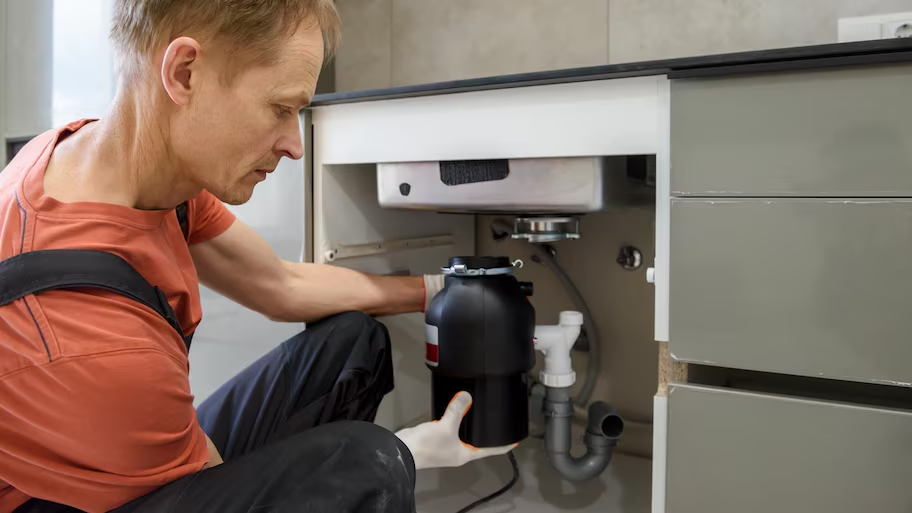The content following next on the subject of Tips on Fixing a Leaking Garbage Disposal is exceedingly motivating. Don't miss out on it.

Waste disposal unit are important kitchen devices that aid in throwing away food waste effectively. Nevertheless, a leaking waste disposal unit can be a frustrating and untidy issue to deal with. The good news is, lots of leaks can be dealt with quickly with a couple of straightforward actions. In this article, we will discuss how to deal with a dripping waste disposal unit properly.
Intro
Garbage disposals are set up under kitchen sinks and are developed to shred food waste into smaller items, permitting it to travel through the plumbing system easily. While these devices are typically dependable, leaks can happen in time because of deterioration, loose links, or damages to the device.
Common Root Causes Of Leaks in Garbage Disposals
Worn Seals and Gaskets
Seals and gaskets play a critical role in stopping water from leaking out of the garbage disposal. In time, these components can weaken, causing leaks around the disposal system.
Loose Links
The links between the garbage disposal and the plumbing system can become loose with time, causing water to leak out throughout procedure.
Cracks or Openings in the Disposal System
Physical damage to the garbage disposal, such as cracks or holes in the real estate, can additionally lead to leakages.
Recognizing the Source of the Leakage
Prior to trying to take care of a dripping waste disposal unit, it is essential to determine the resource of the leakage. This can commonly be done via visual examination or by conducting easy tests.
Visual Assessment
Examine the waste disposal unit system carefully for any signs of water leakage. Pay close attention to locations around seals, gaskets, and connection points.
Testing for Leaks
One way to check for leaks is by running water through the disposal system and looking for any visible indications of leakage.
Devices and Products Needed for Fixing a Dripping Garbage Disposal
Prior to beginning the repair process, gather the essential devices and materials, including a screwdriver, flexible wrench, plumber's putty, replacement seals or gaskets, and epoxy or patching material for repairing fractures or holes.
Step-by-Step Overview to Repairing a Dripping Garbage Disposal
Switch off the Power
Prior to trying any type of repairs, make sure that the power to the waste disposal unit system is switched off to stop the risk of electric shock.
Find the Leak
Determine the precise location of the leak and determine the cause.
Tighten up Links
Use a wrench to tighten up any type of loose links between the disposal device and the plumbing system.
Change Seals or Gaskets
If the leak is because of used seals or gaskets, remove the old elements and change them with new ones.
Patching Fractures or Openings
For cracks or holes in the disposal device, use epoxy or an ideal patching product to seal the damaged area.
Testing the Waste Disposal Unit After Fixing
When the repair service is full, test the garbage disposal by running water through it to make certain that the leak has been resolved.
Preventive Maintenance Tips to Prevent Future Leakages
To avoid future leaks, it is necessary to execute routine upkeep on your waste disposal unit. This includes keeping it tidy, staying clear of placing non-food items or tough items down the disposal, and periodically checking for leaks or other problems.
Verdict
To conclude, repairing a dripping garbage disposal is a reasonably straightforward process that can be completed with standard tools and products. By complying with the actions outlined in this article and practicing preventive upkeep, you can maintain your waste disposal unit in good working condition and stay clear of costly repair work in the future.
What to Do About a Leaking Garbage Disposal
A leaking garbage disposal often goes unnoticed until you confront a sopping cabinet, a foul-smelling puddle, or an audible drip-drip-drip from the unit. The fix can be frustrating, too, because the leak can stem from a number of components in the system. Fortunately, with a little sleuthing, you can zero in on the leak and—depending on the exact location—stop the icky oozing and repair the component that caused it. Worst case scenario, if it turns out that the garbage disposal must be replaced, installing a new one is a reasonable do-it-yourself task for those with basic plumbing skills. Read on to keep the cash you’d otherwise hand over to a pro.
Prepare to find the leak
Prior to testing the garbage disposal for leaks, unplug it at the wall outlet and turn off the power from the breaker box to prevent electrical shock. Then insert a watertight sink stopper into your sink drain and wipe the unit dry with a clean cloth. In any handy container, mix a few drops of food coloring into a few cups of water, and pour the dyed water onto the sink stopper to help you locate the leak.
Investigate the source
the top, where the disposal meets the sink drain the side, where the dishwasher hose or main drain pipe connects to the disposal or the bottom of the unit Inspect each of these locations while gliding a light-colored rag over the unit; the dyed water will readily show on the rag and reveal the location of the leak. If a leak isn’t immediately apparent, remove the sink stopper and pour a few more cups of dyed water down the sink drain, then check for leaks again. Leaks near the top of the unit are more likely to show themselves while the sink is plugged, while side and bottom leaks are more noticeable while the sink is unplugged.
The metal sink flange that sits directly inside the sink drain is typically sealed around the top with plumber’s putty (a clay-like sealant) and then secured from under the sink with bolts. If the plumber’s putty deteriorates, or the bolts loosen, the flange can no longer form a watertight seal between the sink drain and the disposal—which could cause a leak at the top of the unit.
To reseal the leaky flange, you must first detach the garbage disposal. Start by loosening the screws securing the main drain pipe to the disposal, then loosen the screws in the metal clamp securing the dishwasher hose to the disposal and detach the drain pipe and dishwasher hose from the disposal. Loosen the screws in the mounting ring that connects the disposal to the metal mounting assembly beneath the sink, then pull down the disposal and carefully set it on a clean, dry surface. Loosen the bolts in the mounting assembly with a wrench, then pull down the mounting assembly and set it near the disposal.

Do you like reading about Why Is My Garbage Disposal Leaking From the Bottom?? Place a remark further down. We will be delighted to see your ideas about this piece. We hope to see you back again later on. Are you aware of someone else who is in the market for the niche? Be sure promote it. I am grateful for your time. Please stop by our site back soon.
Call Today